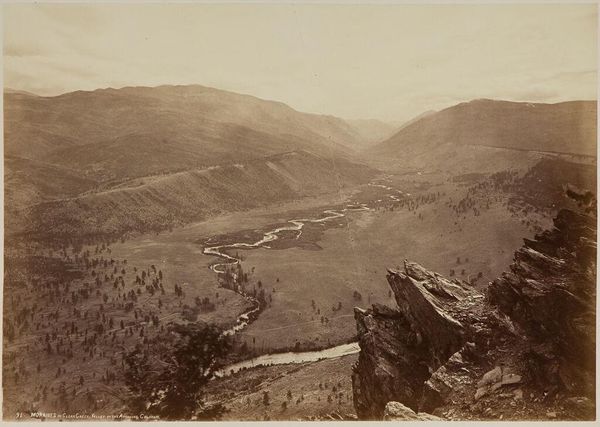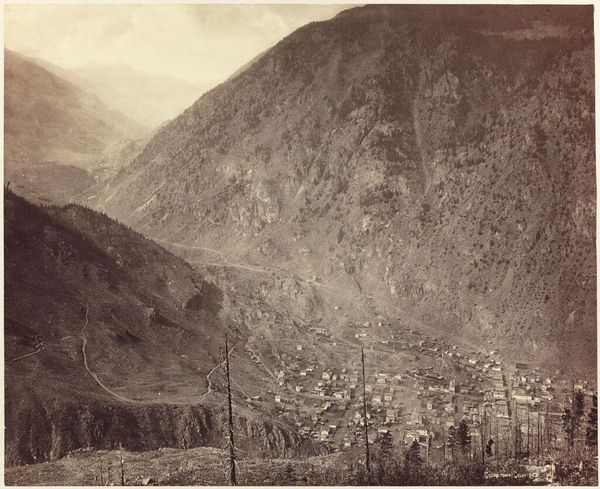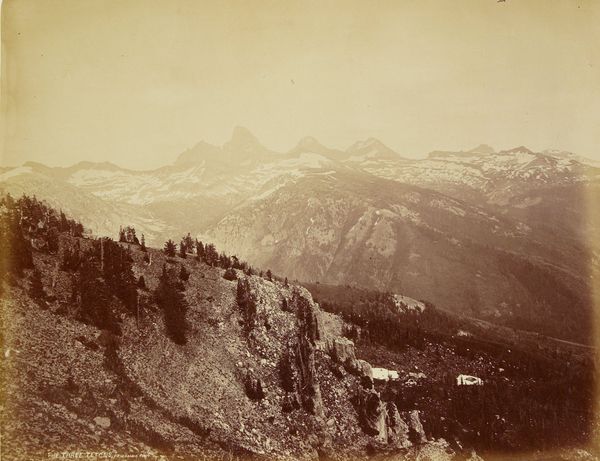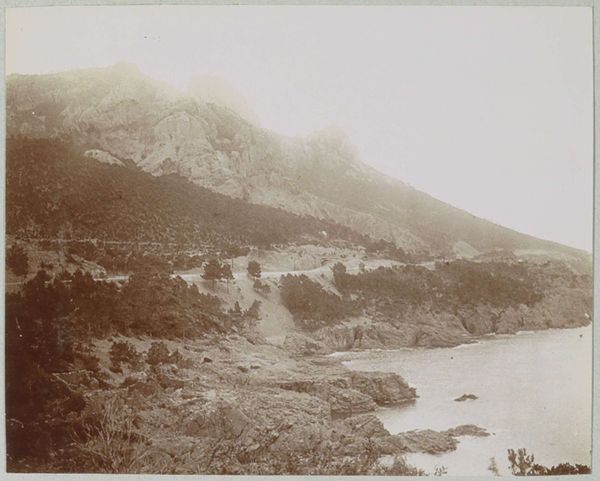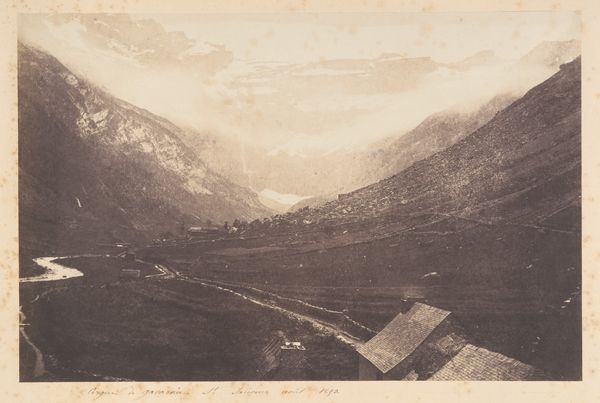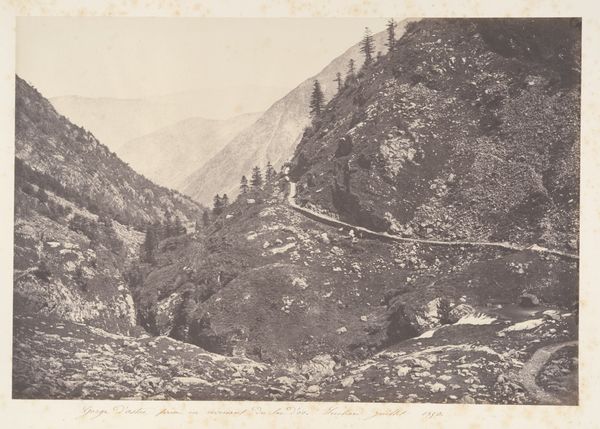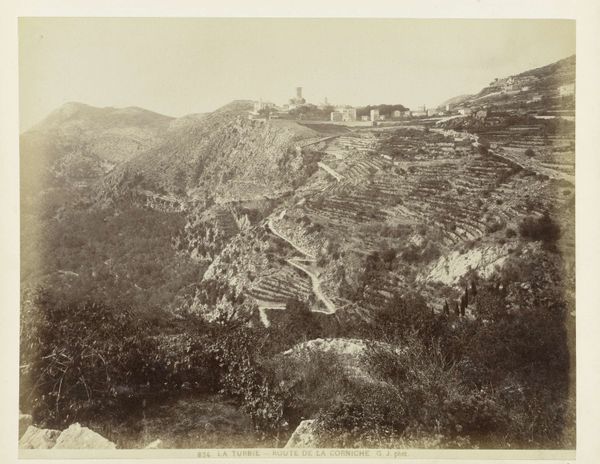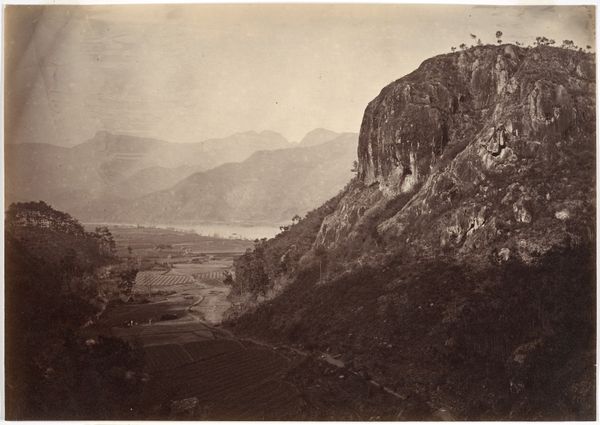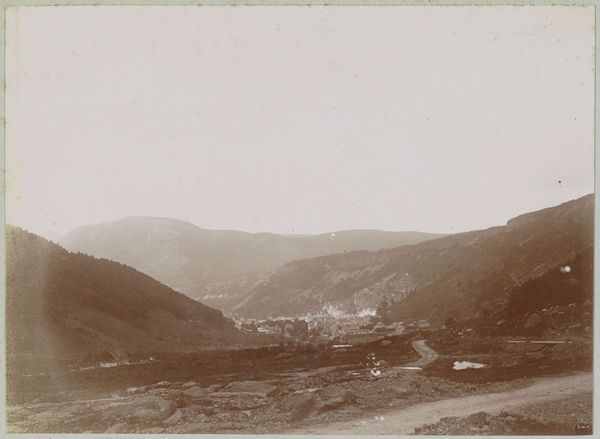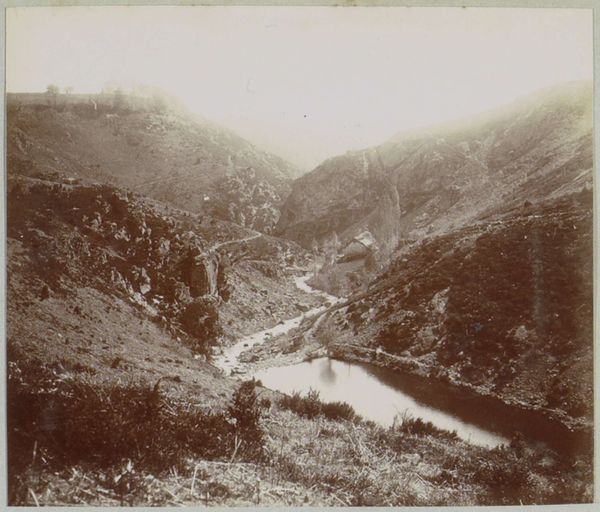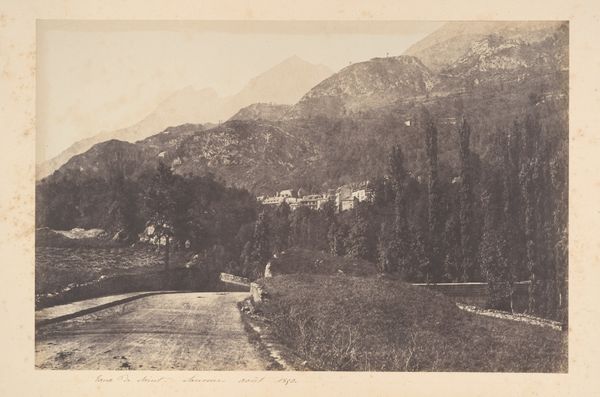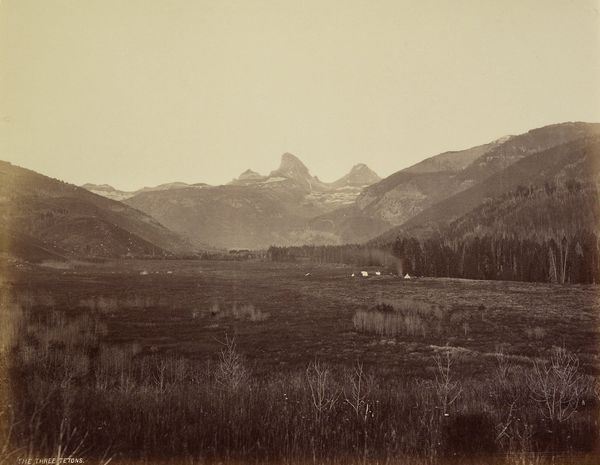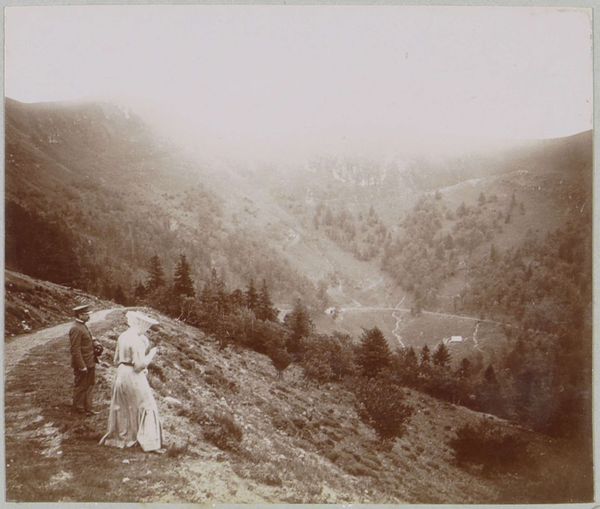
albumen-print, photography, albumen-print
#
albumen-print
#
landscape
#
photography
#
hudson-river-school
#
united-states
#
albumen-print
#
realism
Dimensions: 10 x 12 15/16 in. (25.4 x 32.86 cm) (image)15 1/2 x 19 3/4 in. (39.37 x 50.17 cm) (mount)
Copyright: Public Domain
Curator: This albumen print, titled "The Teton Range South," was created in 1873 by William Henry Jackson. It's part of the collection here at the Minneapolis Institute of Art. What are your initial thoughts? Editor: It’s striking. There's something haunting about this landscape, like a memory fading at the edges. The sepia tones add to that feeling of looking into the past. It’s grandiose, but tinged with a certain… fragility? Curator: That's perceptive. Jackson was very interested in capturing the sublime vastness of the American West, aligning him with the Hudson River School's sense of awe and spirituality. That grandeur resonates through time, doesn't it? Editor: Absolutely, but also consider what that “sublime” often obscures. This land wasn’t empty; it was, and still is, Indigenous land. These majestic landscapes were also sites of displacement and conflict, so, beyond beauty, there’s also that uncomfortable history embedded in the image. Curator: A necessary consideration. It’s interesting to observe the compositional elements. The gnarled tree in the foreground, for instance, can symbolize resilience and the struggle for survival against harsh elements. It invites introspection. Editor: It could also represent disruption. It’s almost like a warning against the perceived dominance or mastery that photographers like Jackson might have unconsciously sought to impose on the landscape. Curator: That tension certainly adds layers to our reading. Jackson’s photographs were crucial in shaping the image of the American West, convincing many of its potential and seemingly unlimited resources. Editor: Right, and framing the landscape as something to be possessed or dominated. That perception fueled westward expansion, but at tremendous cost to native communities and the environment. It’s impossible to detach these images from that context. Curator: A truly powerful landscape indeed, especially when one takes into account not just its inherent grandeur, but the narrative that this work is contributing to as part of visual and cultural memory. Editor: A poignant visual paradox, beauty entangled with the brutal reality of its own historical moment. Thank you for bringing new light to this piece.
Comments
No comments
Be the first to comment and join the conversation on the ultimate creative platform.
